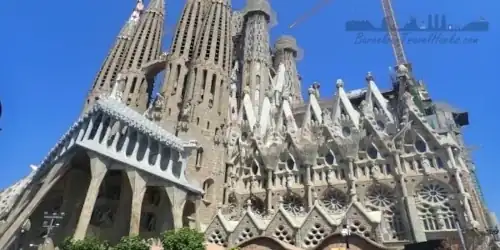 METRO
METROVisiting Catalan Modernism architecture in Barcelona
Explore the Gaudi, Domenech I Muntaner and Puig i Cadafalch Catalan modernism Art Nouveau architectural masterpieces in Barcelona.
Description of Catalan Modernism
Catalan modernism, Modernisme, is an architectural style particular to Catalonia which has elements of Art Nouveau, gothic and modernism.
Catalan Modernism started around the end of the 19th century in parallel with the Industrial Revolution. Catalan Modernism differs from the Medieval and roman architecture found in the old gothic centre and Born areas of old Barcelona. Buildings from this period of construction predominantly used Stone quarried from the hills in Collserola and Montjuic.
Many turn of the century industrial and civic buildings were constructed in Catalan modernism style, noted for the brick walls with accents, brick curved walls, spiraled columns and decorated colour tile accents. Examples of this style Include the Palau de La Musica, Sants food Market, Recinte Modernista de Sant Pau (former grand hospital), Caixa forum (former textile factory) and Three Dragons castle (Former Restaurant built for 1888 World Exhibition).
Catalonia has always been a very wealthy part of Spain from its days as a Roman port through the medieval periods and into modern history. At the end of the 19th Century there was great social change as agrarian labour was replaced by mechanisation and workers moved to the cities to find employment in the many factories. The area East of the medieval centre of Barcelona in what is today vila Olimpica, Poble Nou, Forum and Besos neighbourhoods were mostly factories linked via railway goods yards.
In Barcelona, La Eixampla neighbourhood surrounding the medieval centre, was constructed to house the population explosion from the large influx of factory workers. Many of the Modernist masterpieces can be found in La Eixample due availability of land because it was open fields and farm land before the population explosion and la Eixampla creation.
Along with the Catalan nationalism movement there was a strong desire to modernise the society for everyone, not just the bourgeois wealthy. Politically, Barcelona was a socialist city and still retains many socialist values today. The movement was taken up by artists, poets, writers and architects. Large civic projects were undertaken like Hospital sant Pau (Recinte Modernista de Sant Pau), to improve the well being of the population. Food markets like Sants were constructed to provide for the expanding population. New railways like the FGC Valles lines were constructed. Notable stations are plaza Catalunya and provenca, both being subterranean stations with tile decoration and modernist flourishes.
When talking about Catalan modernism, the obvious name that comes to mind is Antonio Gaudi who's works include La Sagrada familia, Casa Batllo, La Pedera - Casa Mila, Parc Guell, Torre bellesguard and Palau Guell. Antonio Gaudi employed Gothic, Art Nouveau and Catalan Modernism in his works, with heavy use of Saint George's dragon (Sant Jordi is the patron saint of Barcelona) in his works. Casa Batllo has the roof shaped like a dragon with the inside white arches representing the ribs and the outside roof tiles representing the scales of the dragon. If you look closely you will make out other features of a dragon such as a body and tail (chimney). Torre bellesguard also has a dragon on the roof. you can see the eyes, body and tail.
The Catalan modernism movement had multiple pioneering architects such as Lluis Domenech I Muntaner who built the Sant Pau hospital (Recinte Modernista de Sant Pau), Palau de la musica and Three Dragons Castle. Josep Puig i Cadafalch built the Caixa Forum (former textile factory). The odd one out here is Josep Domenech i Estapa who hated Catalan Modernism style but some of his works such as Fabra Observatory and Cosmo Caixa science museum contain touches of Art Nouveau style.
Many of the Catalan Modernism buildings were commissioned by the wealthy bourgeois merchants of Barcelona and give the city a unique culture and artistic vibe to this day.
The attractions below on this page are all examples of Catalan Modernism and have common themes such as Parabolic arches, curved lines, Features that replicate nature: animals, trees and plants; Use of brightly coloured ceramics and plenty of ornate detail. Some of these buildings are on the UNESCO world heritage list.
Click on any of the images to read more and discover how to visit each masterpiece.
Happy Exploring!
Catalan Modernism Guided Tours in Barcelona
15 things to do and see in Barcelona with a theme of Catalan Modernism
 METRO
METRO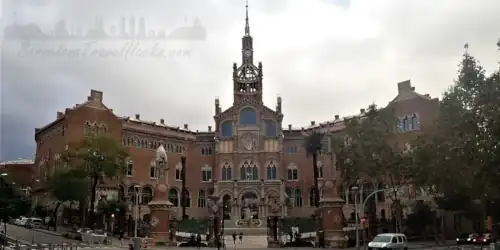 METRO
METRORecinte Modernista Sant Pau Museum UNESCO World Heritage Site
Former grand art-nouveau hospital complex and today a museum and exhibition space. Built 1930 by Lluís Domènech i Montaner. UNESCO site
Read more >
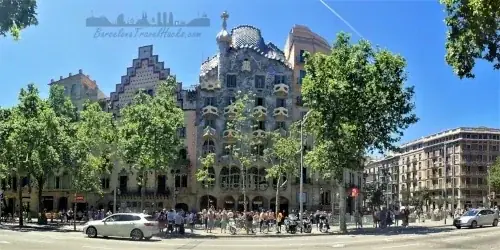 METRO
METROCasa Batlló UNESCO Art Nouveau Gaudí House
Nicknamed House of bones, One of two modernist art nouveau houses designed by Antoni Gaudí on Passeig de Grácia. Famous for bright coloured tiles
Read more >
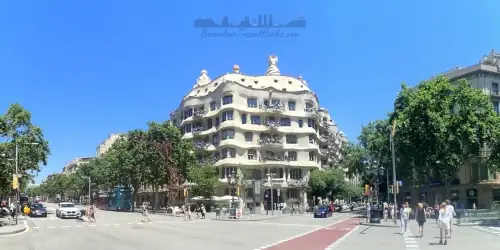 METRO
METROCasa Milá La Pedrera Gaudí UNESCO House
Casa Milá / La Pedrera (the rock) Barcelona. Gaudí modernist house. Tickets, info, history & nearby attractions
Read more >
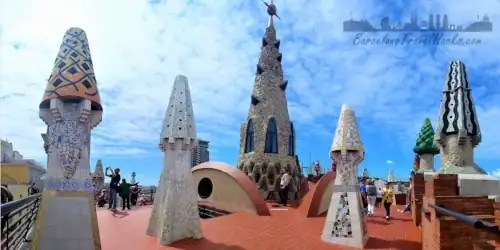 METRO
METROPalau Güell Antoni Gaudí castle themed Palace
Eusebi Güell mansion museum by architect Antoni Gaudí & restored in 2011. Tickets and info for visits. UNESCO World Heritage Site
Read more >
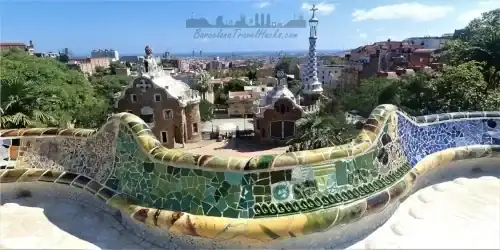 METRO
METROParc Güell, Barcelona - Essential Information & Tickets
Antoni Gaudí UNESCO world Heritage site & public park since 1926. Commissioned by Eusebi Güell to be a luxury housing estate
Read more >
 FGC+BUS
FGC+BUS1904 Fabra Observatory for study of asteroids and comets
Historic 1904 fully functional observatory by architect Josep Domenech i Estapa. Observatory offers guided visits and summer evening dinner & stargazing
Read more >
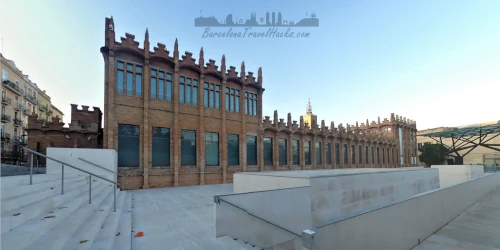 METRO
METROCaixa Forum Barcelona - Exhibition & Cultural Centre
Art gallery, museum & exhibition space. Former modernist textile factory built in 1911 by architect Josep Puig i Cadafalch. Info & Tickets
Read more >
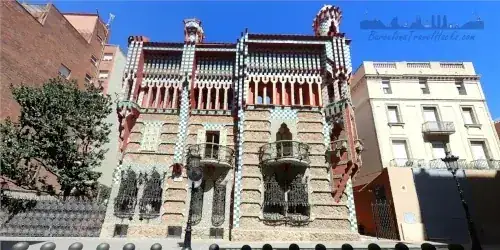 METRO
METROCasa Viçens Barcelona- Gaudí in Gràcia
1st Gaidí house & early Art Nouveau building. Commissioned by Manuel Viçens i Montaner for summer residence. UNESCO Wold heritage. Tickets & Info
Read more >
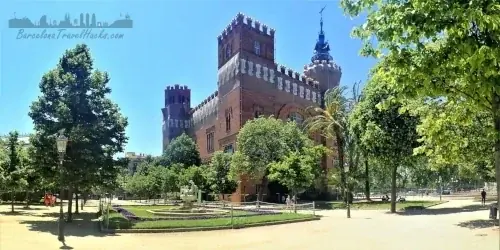 METRO
METROCastell dels Tres Dragons - 3 Dragons Castle & Greenhouses
Café-restaurant by Lluís Domènech i Montaner for 1888 Universal Exhibition & two greenhouses. Closed for refurbishment
Read more >
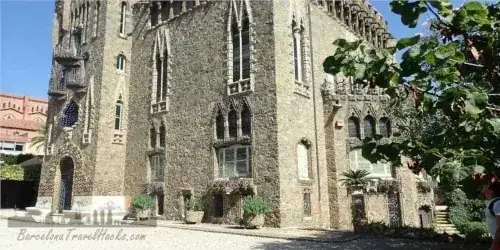 FGC
FGCTorre Bellesguard Gaudí Castle House - Tours & Tickets
Private residence, ornate garden, guided house tour. Tickets & info. Includes 1410 medieval castle ruins of Martin I the Humane, King of Aragon
Read more >
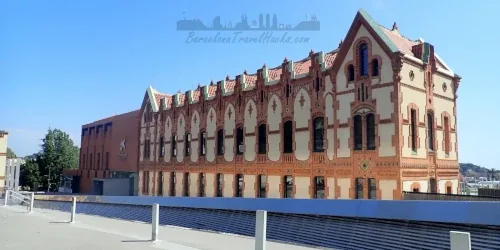 FGC
FGCMuseu de la Ciència CosmoCaixa with Indoor Rain Forest
Child friendly science museum located in a vast modern space with 1909 Façade by architect Josep Doménech i Estapà. European Museum of the Year 2006
Read more >
 METRO
METROPalau De La Música Catalana - Famous Concert Hall
Art-Nouveau 1908 UNESCO concert hall by Lluís Domènech i Montaner with ceiling skylight. Guided tour tickets or visit for a concert
Read more >
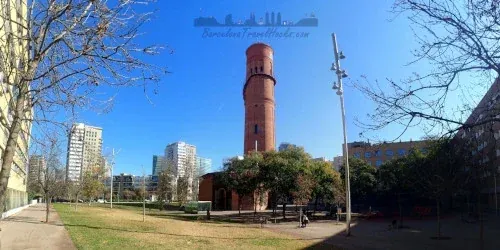 METRO
METROBesòs Water Tower - Torre de les Aigües del Besòs
A historic modernist industrial brick landmark in the Poblenou and Fòrum neighbourhoods & a beautiful example of water infrastructure in Catalonia
Read more >
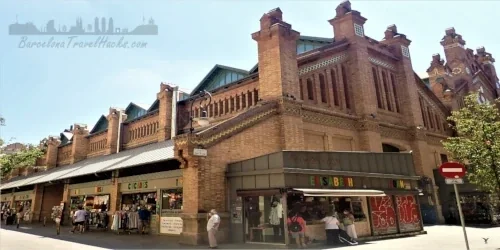 METRO
METROSants Modernist century old Food Market
Mercado de Sants is a beautiful, recently refurbished, large, modernist, brick, cathedral like, food market dating from 1913
Read more >
3 things to do and see outside of Barcelona with a theme of Catalan Modernism
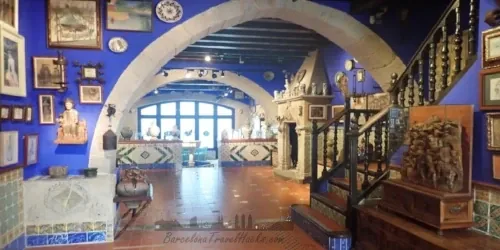 TRAIN
TRAINSitges Cau Ferrat house and Maricel Art Gallery
Former home of artist Santiago Rusiñol now a museum that exhibits his art and collections. Art, furniture and sculptures by important Spanish modernist artists
Read more >
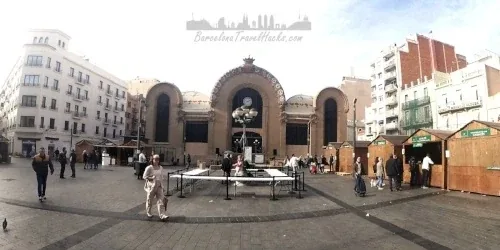 TRAIN
TRAINTarragona Central Market | Mercat Central de Tarragona
1915 modernist food market in residential centre of Tarragona near to Rambla Nova and the Colonial Forum. Good place for tapas, late breakfast or early lunch
Read more >
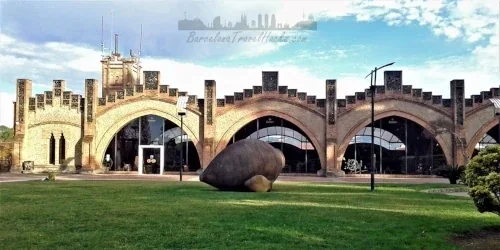 TRAIN
TRAIN